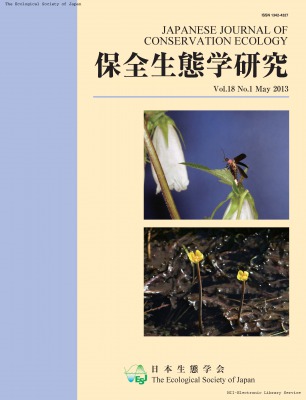Volume 18, Issue 1
Displaying 1-15 of 15 articles from this issue
- |<
- <
- 1
- >
- >|
-
Article type: Cover
2013Volume 18Issue 1 Pages Cover1-
Published: May 30, 2013
Released on J-STAGE: August 01, 2017
Download PDF (3494K) -
Article type: Index
2013Volume 18Issue 1 Pages Toc1-
Published: May 30, 2013
Released on J-STAGE: August 01, 2017
Download PDF (302K) -
Article type: Article
2013Volume 18Issue 1 Pages 1-3
Published: May 30, 2013
Released on J-STAGE: August 01, 2017
Download PDF (340K)
Original Article
-
Article type: Original Article
2013Volume 18Issue 1 Pages 5-18
Published: May 30, 2013
Released on J-STAGE: August 01, 2017
Download PDF (1974K) -
Article type: Original Article
2013Volume 18Issue 1 Pages 19-31
Published: May 30, 2013
Released on J-STAGE: August 01, 2017
Download PDF (1898K) -
Article type: Original Article
2013Volume 18Issue 1 Pages 33-44
Published: May 30, 2013
Released on J-STAGE: August 01, 2017
Download PDF (574K) -
Article type: Original Article
2013Volume 18Issue 1 Pages 45-54
Published: May 30, 2013
Released on J-STAGE: August 01, 2017
Download PDF (1197K) -
Article type: Original Article
2013Volume 18Issue 1 Pages 55-68
Published: May 30, 2013
Released on J-STAGE: August 01, 2017
Download PDF (1269K) -
Article type: Original Article
2013Volume 18Issue 1 Pages 69-76
Published: May 30, 2013
Released on J-STAGE: August 01, 2017
Download PDF (437K) -
Article type: Original Article
2013Volume 18Issue 1 Pages 77-89
Published: May 30, 2013
Released on J-STAGE: August 01, 2017
Download PDF (1326K)
Report
-
Article type: Report
2013Volume 18Issue 1 Pages 91-99
Published: May 30, 2013
Released on J-STAGE: August 01, 2017
Download PDF (616K) -
Article type: Report
2013Volume 18Issue 1 Pages 101-105
Published: May 30, 2013
Released on J-STAGE: August 01, 2017
Download PDF (1196K) -
Article type: Appendix
2013Volume 18Issue 1 Pages 107-110
Published: May 30, 2013
Released on J-STAGE: August 01, 2017
Download PDF (375K) -
Article type: Appendix
2013Volume 18Issue 1 Pages App7-
Published: May 30, 2013
Released on J-STAGE: August 01, 2017
Download PDF (302K) -
Article type: Index
2013Volume 18Issue 1 Pages Toc2-
Published: May 30, 2013
Released on J-STAGE: August 01, 2017
Download PDF (3494K)
- |<
- <
- 1
- >
- >|
